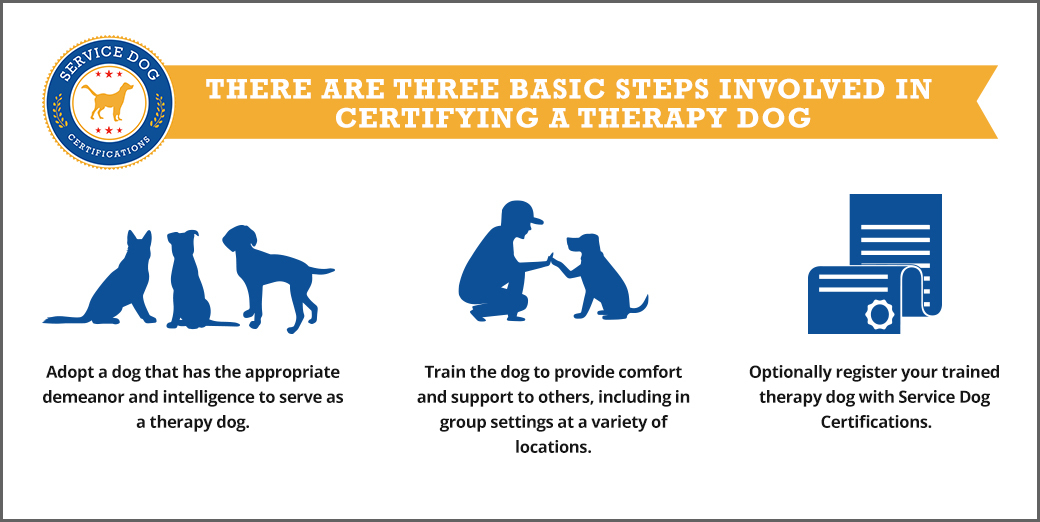Key Takeaways
Therapy dogs can provide emotional support and companionship to seniors in memory care, helping to reduce anxiety and improve mood.
Therapy dogs differ from service dogs; they provide comfort through their presence rather than performing specific tasks.
To make your dog a therapy dog, start by assessing its temperament and ensuring it can follow basic obedience commands.
Professional training and certification through recognized organizations are crucial steps in the process.
Coordinating with memory care facilities is essential to ensure safe and effective therapy dog visits.
Transforming Your Dog into a Therapy Dog for Memory Care
Having a dog that can provide comfort and companionship to your aging parent in memory care is not just heartwarming; it can significantly improve their quality of life. Therapy dogs have the unique ability to lift spirits, reduce stress, and bring joy to those who need it most. But how do you transform your beloved pet into a therapy dog?
“How to Certify a Therapy Dog – Service …” from www.servicedogcertifications.org and used with no modifications.
Benefits of Therapy Dogs for Aging Parents
Therapy dogs offer numerous benefits, especially for seniors in memory care. They are known to reduce anxiety, improve mood, and even encourage social interaction among residents. The presence of a friendly dog can remind seniors of past pets, evoking pleasant memories and a sense of comfort.
Moreover, therapy dogs can help reduce feelings of loneliness and isolation, which are common in memory care facilities. The simple act of petting a dog can release endorphins, the body’s natural feel-good chemicals, promoting a sense of well-being.
Therapy dogs can also act as social catalysts. They encourage residents to engage in conversations, not only with the dog but also with each other and staff. This social interaction can be vital for mental health and cognitive function.
Reduce anxiety and stress
Improve mood and emotional well-being
Encourage social interaction and engagement
Provide a sense of comfort and companionship
Therapy Dog vs. Service Dog: Understanding the Difference
Before embarking on the journey to make your dog a therapy dog, it’s important to understand the distinction between therapy dogs and service dogs. While both provide invaluable support, their roles and training differ significantly.
Service dogs are trained to perform specific tasks for individuals with disabilities, such as guiding the visually impaired or alerting those with hearing impairments. They are considered working animals and have legal access to public places under the Americans with Disabilities Act (ADA).
In contrast, therapy dogs provide comfort and emotional support through their presence. They do not perform specific tasks but instead offer companionship and affection. Therapy dogs are not covered by the ADA and do not have the same public access rights as service dogs. Their primary role is to visit hospitals, nursing homes, and other facilities to bring joy and comfort to those in need.
Steps to Certification and Training
Making your dog a therapy dog involves several key steps, including evaluating your dog’s temperament, ensuring they have basic obedience skills, and obtaining professional training and certification. Let’s explore these steps in more detail.
Evaluating your dog’s temperament is the first and most crucial step. Not every dog is suited to be a therapy dog. They must be calm, friendly, and comfortable around strangers. If your dog is easily stressed or aggressive, they may not be suitable for therapy work.
Once you’ve determined that your dog has the right temperament, it’s time to focus on basic obedience and behavioral commands. A therapy dog must be well-behaved and able to follow commands such as sit, stay, come, and leave it. Consistent training is essential to ensure your dog responds reliably in various situations.
Evaluating Your Dog’s Temperament and Suitability
Not all dogs are cut out to be therapy dogs. It’s important to evaluate your dog’s temperament and ensure they have the right personality traits. A good therapy dog should be calm, friendly, and comfortable around people of all ages.
Consider how your dog reacts in different situations. Are they easily frightened or stressed? Do they enjoy being around people, or do they prefer solitude? A therapy dog must be adaptable and able to handle various environments and situations.
Basic Obedience and Behavioral Commands
Before pursuing therapy dog certification, your dog must have a solid foundation in basic obedience. They should be able to follow commands such as those used by canine caregivers for dementia and Alzheimer’s patients.
Sit
Stay
Come
Leave it
These commands are crucial for ensuring your dog’s safety and the safety of those around them. Consistent training and reinforcement are key to maintaining these skills.
Besides basic obedience, your dog should also be well-socialized. This means they should be comfortable around different people, animals, and environments. Socialization helps prevent anxiety and aggression, making your dog a more effective therapy companion.
Seeking Professional Therapy Dog Training
While basic obedience training can be done at home, professional therapy dog training is often necessary to ensure your dog meets the specific requirements for certification. Professional trainers can help refine your dog’s skills and prepare them for the unique challenges of therapy work. Learn more about the benefits of having a service dog for the elderly.
Look for trainers or organizations that specialize in therapy dog training. They can provide valuable guidance and support throughout the certification process. Training sessions should focus on socialization, obedience, and specific skills needed for therapy work, such as remaining calm in busy environments and interacting positively with strangers.
Certification Requirements and Organizations
Once your dog is ready for therapy work, the next step is certification. Certification ensures that your dog meets the standards required to safely and effectively interact with memory care residents. This process involves working with recognized organizations that specialize in therapy dog certification.
Several organizations offer therapy dog certification, including Therapy Dogs International (TDI), Pet Partners, and the Alliance of Therapy Dogs. Each organization has its own requirements, but they generally include a temperament test, obedience assessment, and health check. Certification helps validate your dog’s ability to serve as a therapy animal and provides liability insurance during visits.
It’s important to research and choose an organization that aligns with your goals and expectations. Look for programs that offer comprehensive training and support throughout the certification process. Remember, certification is not a one-time event; ongoing evaluation and training are necessary to maintain your dog’s status as a therapy dog.
Implementing Therapy Dog Visits in Memory Care
Once your dog is certified, it’s time to implement therapy dog visits in memory care facilities. These visits can bring immense joy and comfort to residents, but they require careful planning and coordination. Start by reaching out to memory care facilities in your area to discuss your interest in therapy dog visits.
Introduce yourself and your dog, and explain the benefits of therapy dog visits. Most facilities are eager to incorporate therapy dogs into their programs, but it’s essential to work together to ensure a smooth and successful experience for everyone involved.
Coordinating with Memory Care Facilities
Coordination with memory care facilities is crucial for successful therapy dog visits. Begin by scheduling an initial meeting with the facility’s staff to discuss logistics and expectations. During this meeting, outline your dog’s certification, training, and the specific goals of your visits.
It’s important to understand the facility’s policies and procedures, as well as any specific needs or preferences of the residents. Some residents may have allergies or phobias, so it’s essential to gather information and plan visits accordingly.
Work with the facility to establish a schedule for visits. Consistency is key, as regular visits can help build trust and familiarity between your dog and the residents. Whether it’s a weekly or monthly visit, having a routine ensures that residents can look forward to spending time with your dog.
Ensuring Safety and Comfort for Residents
Example: During a visit to a local memory care facility, a therapy dog named Max was introduced to a resident who had been feeling particularly anxious. Max approached slowly, allowing the resident to pet him at her own pace. As she gently stroked Max’s fur, her demeanor visibly relaxed, and a smile spread across her face. The staff noted that she continued to talk about Max long after the visit, highlighting the positive impact of the interaction. For more information on how therapy dogs can aid in dementia and Alzheimer’s care, visit this resource.
Ensuring the safety and comfort of residents is paramount during therapy dog visits. Always supervise interactions and be attentive to residents’ cues. Some may be hesitant or unsure, while others may eagerly engage with your dog. Encourage gentle interactions and provide guidance when necessary.
It’s important to maintain open communication with facility staff. They can provide valuable insights into residents’ preferences and any special considerations. Collaborate with staff to create a safe and enjoyable environment for everyone involved.
Remember, your dog’s well-being is just as important as the residents’. Monitor your dog’s stress levels and provide breaks as needed. A happy, relaxed dog will be more effective in providing comfort and companionship.
Building a Routine for Successful Visits
Establishing a routine is essential for successful therapy dog visits. Consistent visits allow residents to become familiar with your dog, fostering a sense of anticipation and excitement. Work with facility staff to create a schedule that accommodates both your dog’s needs and the residents’ schedules.
During each visit, follow a familiar pattern. Start with a brief introduction and allow residents to approach your dog at their own pace. Encourage gentle interactions and provide positive reinforcement for both your dog and the residents.
End each visit on a positive note, leaving residents with a sense of joy and fulfillment. Thank the staff for their support and gather feedback to continually improve the experience for everyone involved.
Impact on Memory Care Residents
The impact of therapy dog visits on memory care residents is profound. These visits provide emotional and psychological benefits, facilitating social interaction and reducing anxiety and agitation. The presence of a therapy dog can bring immense joy and comfort to those in need.
Emotional and Psychological Benefits
Therapy dogs offer significant emotional and psychological benefits to memory care residents. Their presence can reduce feelings of loneliness and isolation, promoting a sense of connection and companionship. Residents often experience improved mood and reduced anxiety, leading to a more positive outlook on life.
Facilitating Social Interaction and Engagement
Therapy dogs act as social facilitators, encouraging residents to engage with each other and staff. The shared experience of interacting with a therapy dog can spark conversations and create a sense of community among residents. This social interaction is vital for mental health and cognitive function, helping residents feel more connected and engaged.
Reducing Anxiety and Agitation
Therapy dogs are particularly effective in reducing anxiety and agitation among memory care residents. The gentle presence of a dog can have a calming effect, helping residents feel more at ease. For many, the simple act of petting a dog can lower blood pressure and promote relaxation. This soothing interaction can be especially beneficial for residents who experience frequent episodes of anxiety or restlessness.
Besides that, therapy dogs can help distract residents from distressing thoughts or emotions. Their playful nature and unconditional affection provide a welcome diversion, allowing residents to focus on the positive aspects of their environment. This shift in attention can significantly reduce feelings of agitation and promote a sense of tranquility.
Maintaining a Healthy and Happy Therapy Dog
Ensuring your therapy dog remains healthy and happy is crucial for their effectiveness in providing comfort to memory care residents. A well-cared-for dog will be more enthusiastic and capable of forming meaningful connections with those they visit.
Regular Health Checks and Vaccinations
Regular health checks and vaccinations are essential for maintaining your therapy dog’s well-being. Schedule routine veterinary visits to monitor your dog’s health and address any potential issues promptly. Keeping your dog’s vaccinations up to date is also crucial, as it protects both your dog and the residents they interact with.
Additionally, maintaining good hygiene is important. Regular grooming, including bathing and nail trimming, ensures your dog is clean and comfortable during visits. A well-groomed dog not only looks their best but also minimizes the risk of spreading germs or allergens.
Nutritional Needs and Exercise
A balanced diet is vital for your therapy dog’s health and energy levels. Consult your veterinarian to determine the best diet for your dog’s specific needs, taking into account their age, breed, and activity level. Providing high-quality food and fresh water will keep your dog in peak condition, ready to engage with memory care residents.
Exercise is equally important. Regular physical activity helps maintain your dog’s physical health and mental well-being. Daily walks, playtime, and mental stimulation through games or training exercises will keep your dog fit and happy. A well-exercised dog is more likely to remain calm and focused during therapy visits.
Monitoring Stress and Providing Downtime
Monitoring your therapy dog’s stress levels is crucial for their well-being and effectiveness. Pay attention to signs of stress, such as excessive panting, restlessness, or withdrawal. If your dog appears stressed, provide them with a break and a quiet space to relax.
It’s important to balance therapy work with downtime. Ensure your dog has plenty of opportunities to rest and recharge between visits. This downtime allows them to recover and maintain their enthusiasm for their role as a therapy dog.
Frequently Asked Questions
Many people have questions about making their dog a therapy dog for memory care. Here are some common inquiries and their answers.
What are the typical costs involved in training a therapy dog?
The costs of training a therapy dog can vary depending on several factors, such as the dog’s current skill level, the training provider, and any additional certification fees. On average, you can expect to spend between $200 and $600 for professional training sessions. Certification fees may range from $50 to $150, depending on the organization. It’s important to budget for these expenses and consider them an investment in your dog’s ability to provide comfort and companionship to those in need.
Can any breed become a therapy dog?
While many breeds can become successful therapy dogs, certain traits are more important than breed. A good therapy dog should have a calm temperament, be friendly and social, and enjoy interacting with people. Breeds known for their gentle nature, such as Golden Retrievers, Labrador Retrievers, and Cavalier King Charles Spaniels, often excel in therapy roles. However, any dog with the right temperament and training can become a therapy dog, regardless of breed. Learn more about canine caregivers for dementia and Alzheimer’s patients.
Ultimately, the most important factor is your dog’s personality and ability to connect with people. Focus on assessing your dog’s suitability for therapy work based on their individual traits and behavior, rather than their breed.
By following these guidelines and investing in your dog’s training and well-being, you can create a rewarding and impactful experience for both your dog and the memory care residents they visit. The joy and comfort a therapy dog can bring are immeasurable, and the bonds formed during these visits can last a lifetime.




Leave a Reply